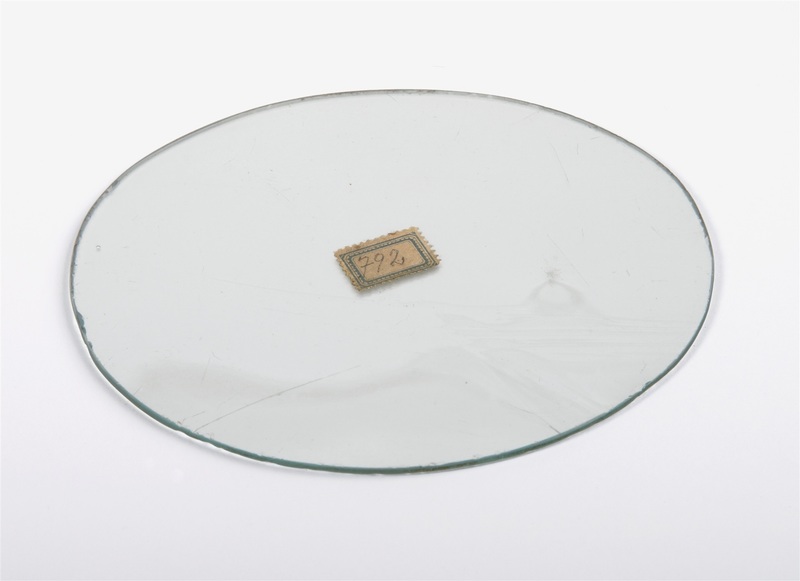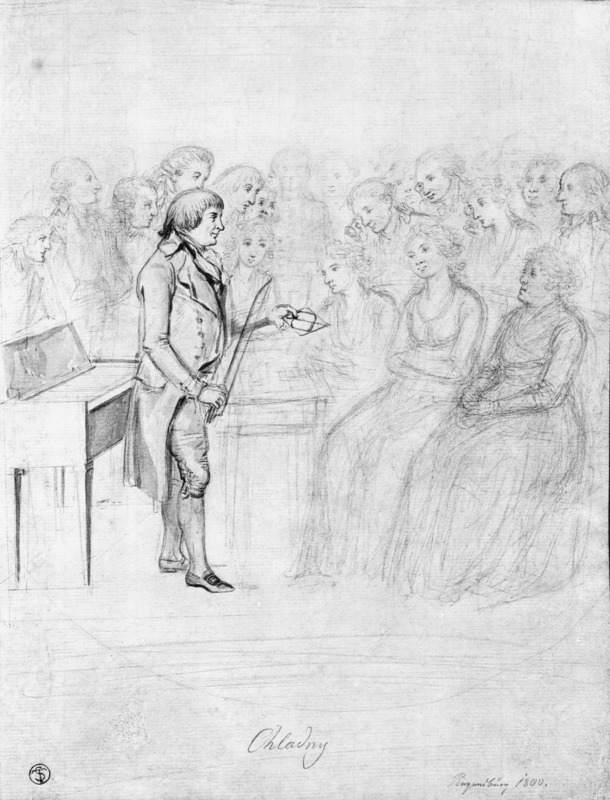Acoustic phenomena on glass
Even today, glass is still not part of the basic repertoire of musical instrument making. Knowledge of other crafts such as glassblowing is required for production. This unusual material has also inspired acoustic experiments. One protagonist in this field, Ernst F. F. Chladni, used glass for various instruments and experimental devices.
He became known around 1800 through his writings on acoustics and demonstrations of figures that made sound visible. Glass plates were sprinkled with sand and set into vibration with a violin bow. The touch at different points by the fingers resulted in different pitches. The oscillation distributed the sand and created different symmetrical patterns on the plates, because following physical rules, some parts of the plate moved, some did not. In this case, glass was the basis for an experiment that made acoustic phenomena visible.
Citation: Rebecca Wolf, ‘Glass sounds or the fascination of transparency’, in: Materiality of Musical Instruments. A Virtual Exhibition.



